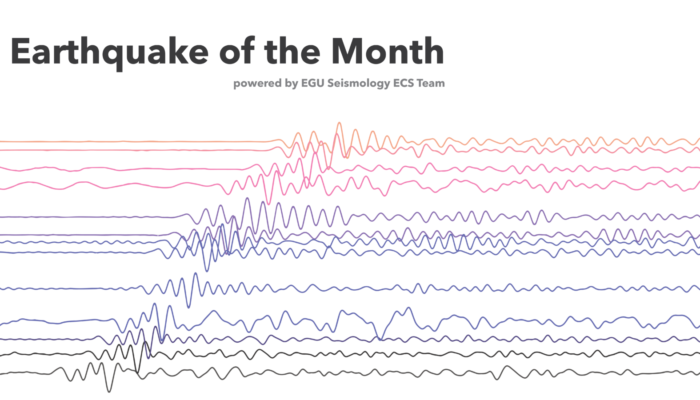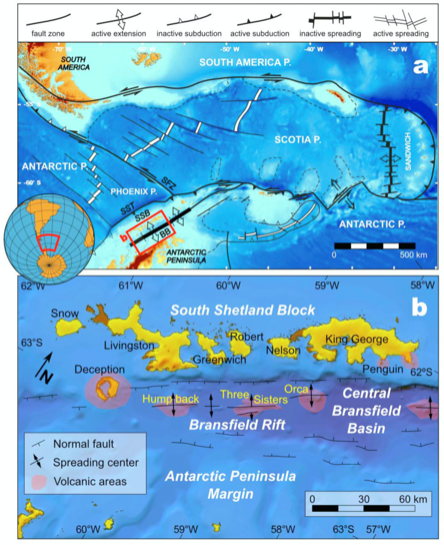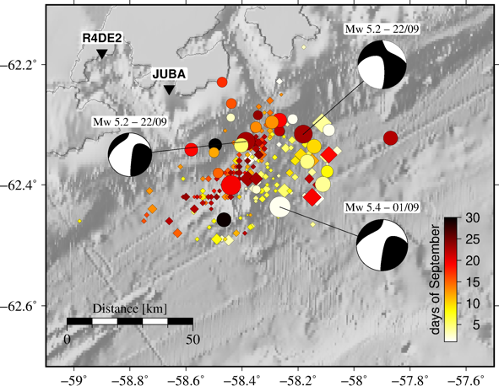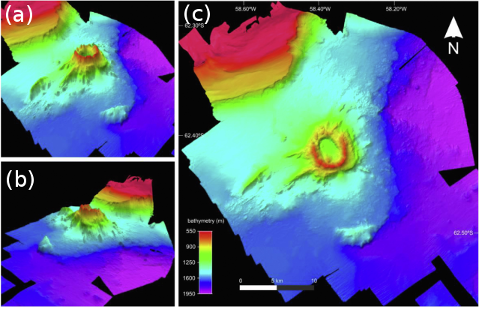
As well as August, September was not highlighted by a large event (> M 7). The TOP 3 strongest earthquakes which occurred during this month correspond to a strike-slip earthquake in the Mid-Atlantic Ridge (M 6.9), an interplate EQ in central-north Chile (M 6.8), and another EQ in a different segment of the Mid-Atlantic Ridge (M 6.7). Furthermore, the largest event in Europe occurred on September 18th located in Pyrgos, Greece, with a magnitude Mw 5.9 characterized by a reverse fault. Nonetheless, our decision was inclined to report an interesting seismic sequence in Antarctica, specifically in the Bransfield Basin between the South Shetland Islands and Antarctic Peninsula. (If you are interested in reading more about research in Antarctica, check out this blog!)

Tectonic setting in the Antarctic Peninsula. The seismicity is concentrated in the Orca volcanic area (Jiménez-Morales et al., 2017; Almendros et al., 2020)
A seismic swarm started in the middle of the Bransfield Basin on August 28th, close to the position of the Orca seamount, southern of King George Island (Figure 1). The largest event in the sequence during September has a magnitude Mw 5.4, however, tens of earthquakes per day have occurred in the same area until today (Figure 2). Focal mechanism analysis indicates a strike-slip component of the three largest events during September (Figure 3). These events show a compensated linear vector dipole (CLVD) component between 18 – 25%, which could explain volumetric changes associated with volcanic environments, although further analysis is needed to conclude.

Seismic activity on September 1st and 22nd recorded by station JUBA, vertical component. Data are available in IRIS.
This seismic swarm continues during October, with some episodic signals recorded in the closest stations of the sequence (e.g. JUBA, Figure 2). The open question remains about this anomalous seismicity, which can be related to volcanic activity close to the Orca seamount (Figure 4). Previous studies suggest that the temperature anomalies in the zone imply hydrothermal flux coming from the seamount (Rodrigo et al., 2018). While the efforts have been made to understand the tectonic setting and geophysical signatures in this area, the white continent remains mysterious.

Seismic swarm in the Orca seamount. Focal mechanisms for the three largest earthquakes during September are plotted. JUBA is the closest station available in IRIS, R4DE2 is a Raspberry Shake. The coloured dots and diamonds correspond to earthquakes located by USGS and RedGeoChile, respectively.
Does Antarctica offer a new interesting phenomenon, similar to the recent seismic activity on the Mayotte Islands (Lemoine et al., 2020)? This seismic sequence could open the possibility to new initiatives in remotes areas, as for example the BRAVOSEIS project (2017-2020), a scientific effort to collect unique and high-quality geophysical data within the Bransfield Strait (Almendros et al., 2020).

Bathymetry of the Orca volcano. (a) View from the SW, (b) View from the SE, (c) Aerial view (modified from Almendros et al., 2020; data: BRAVOSEIS project).
TOP 3 – September earthquakes
Central Mid-Atlantic earthquake – 18th September – M 6.9
Vallenar earthquake (Chile) – 1st September – M 6.8
Central Mid-Atlantic earthquake – 6th September – M 6.7
References
-
- Jiménez-Morales, V., Almendros, J., & Carmona, E. (2017). Detection of long-duration tremors at Deception Island volcano, Antarctica. Journal of Volcanology and Geothermal Research, 347, 234-249.
- Almendros, J., et al. (2020). BRAVOSEIS: Geophysical investigation of rifting and volcanism in the Bransfield strait, Antarctica. Journal of South American Earth Sciences, 102834.
- Rodrigo, C., Blamey, J., Huhn, O., & Provost, C. (2018). Is there an active hydrothermal flux from the Orca seamount in the Bransfield Strait, Antarctica?. Andean geology, 45(3), 344.
- Lemoine, A., Briole, P., Bertil, D., Roullé, A., Foumelis, M., Thinon, I., Raucoules D., de Michele M., Valty P., & Colomer, R. H. (2020). The 2018–2019 seismo-volcanic crisis east of Mayotte, Comoros islands: seismicity and ground deformation markers of an exceptional submarine eruption. Geophysical Journal International.
- BRAVOSEIS project 2017-2020: http://wpd.ugr.es/~bravoseis/bravoseis/resultados-preliminares/
This blog post was written by ECS representative Javier Ojeda
with revisions from ECS representative Maria Tsekhmistrenko
